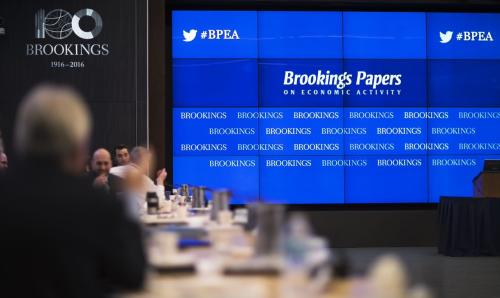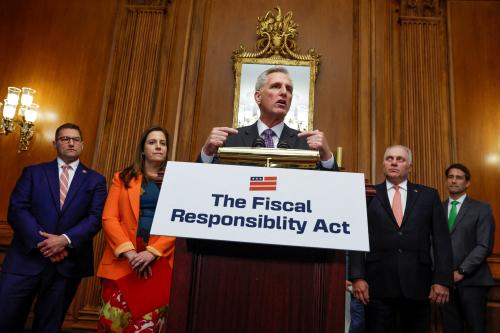Automatic stabilizers—mechanisms built into the federal budget that increase spending or decrease taxes when the economy slows without any vote from Congress– are a major tool the government uses to respond to recession. For instance, spending on unemployment compensation automatically increases when there are more people out of work.
During the Great Recession, automatic stabilizers worked to boost consumer spending, as the Congressional Budget Office’s Wendy Edelberg explains in the video below.
But are automatic stabilizers as effective as they can or should be? Ben Spielberg of the Center on Budget and Policy Priorities argued that Congress should expand existing automatic stabilizers if the U.S. is to be well-prepared for the next recession. One place to do so is to automatically increase the share of Medicaid costs paid by the federal government when the economy slows, lightening the burden for state budgets squeezed by a downturn. Drawing from a paper he and his colleague Jared Bernstein recently released, Spielberg described how during the last recession, Congress voted to do just that in the hopes that such a move would allow states to avoid spending cuts elsewhere in their budget.
Automatic stabilizers aren’t the only fiscal tool available in case of recession. Discretionary fiscal policy – like the fiscal stimulus approved by Congress in the last year of the George W. Bush presidency and the first year of the Barack Obama presidency—has also been necessary to combat recessions. The problem is that these fiscal stimulus methods require Congress’s approval, which in today’s environment of political gridlock may be good enough reason to strengthen automatic stabilizers, insuring against the possibility that Congress won’t act promptly.
For video and transcript of the entire two-hour event on responding to the next recession, click HERE.



Commentary
Should we make automatic stabilizers bigger and better before the next recession?
March 25, 2016